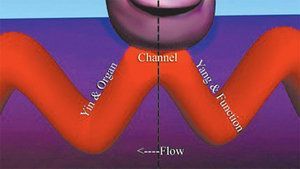When we talk about fertility, the focus is often placed on the ovaries and the uterus. Yet sperm-related factors contribute to nearly half of all cases of infertility. Whether someone is navigating fertility care alone or with a partner, and whether building a family through intercourse, IVI, IUI or IVF, it’s vital to include sperm health in the picture.
Acupuncture and the Pulse
In 1991, I attended a martial arts workshop hosted coincidentally by Sung Baek, a martial artist and the head of his lineage as a Korean trained acupuncturist. I was enamored by the details Sung could attain from the pulse, as told to me by some of his apprentices. He is able to palpate a patient's pulse and discern when they had surgery, which bones had been broken years ago, which organs had been removed by surgery, and which organs have a deficiency or excess. These details assist him with an accurate diagnosis guiding his treatment and herbal recommendations. Some time in early 2000 I met Jim Ramholz who was Sung's number one student. He too had developed the gift of detailed pulse diagnosis and the ability to teach it in a useful quantifiable way.
Basically, there are two ways to look at the pulse qualitatively and quantitatively. The qualitative approach is subjective and relies on the interpretation of a tactile sensation. The quantitative approach is objective and relies on the location of the particular sensation and that location's function and relationship to the body, mind and spirit based on Chinese medical principles.
This is a qualitative approach to look at the pulse with 27 qualities/textures and initially seems to be a very subjective approach (respectively valuable and effective, just difficult to teach and share). The 27 qualities may take a practitioner many years of repeated exposure to confirm each specific quality.

Quantitatively looking at the pulse was a huge eye opener for me. Previously, I may have noticed the pulse qualitatively as wiry in the right cun position and deduced that they have some Qi and blood stagnation. A quantitative feel of that location (right cun) and quickly I am able to diagnose a patient's physical pain and tell the patient where it was located on their body by understanding the locations in detail.
I have found that a quantitative approach is simpler to understand and teach with greater initial effectiveness of diagnosis. Each location of the pulse is broken down by specific function and relationship to the entire system, and as our fingers become more accustomed to each location we can break the location down again and again. The locations are fixed and leave room for mostly objective analysis.
So let's start with a normal pulse, which should generally feel like a smooth, flowing force. When entering your finger, the yang portion of the pulse should feel the same as the when leaving the yin portion, when rolling your fingers to the ulnar side of the pulse it should feel the same as the radial side.
Every pulse location has a basic normal pulse. As shown (for the purpose of the picture) the blood in the artery is moving from right to left. The proximal side of the pulse is the yang side of the pulse and the distal side is the yin portion of the pulse. The upper most part of the pulse is the peak of the yang known as the Channel location for that specific organ.
The proximal side of the pulse also represents the function of that particular organ. The function of the organ is what the organ responsible for. As an example, the spleen is responsible for proper transportation and transformation with in the body, memory, holding the blood in the vessels. The yin aspect of the spleen aids with digestion, supports muscles. Feeling the pulse of the spleen on the right guan position deep portion allows us to examine many/all of the aspects of the spleen that will assist us in a proper diagnosis and differentiation according to traditional Chinese medicine principles. Initially, when looking at the pulse with this perspective our goal is to identify where the disharmony is yin or yang and move forward from there. (Here is an example: When looking at the right side guan position, we recognize that the yang portion of the pulse is weak, are diagnosis is guided to a spleen yang deficiency.) This process is duplicated in each position of the pulse and with more practice can be refined more and more.
Then we have pathologically normal. Here are a few examples:
- A women on her menstrual cycle. Her pulse should be weak in the left guan position deep in the liver location, as your fingers are become more aware of each location you will be able to notice the hollow quality in this liver pulse.
- A person who just lost a loved one. The right cun position is the location of the metal organs which are related to grief according to Chinese medicine principles. The yang portion of the pulse here is associated with the emotion and will have a hollow quality pulse as the acute loss drains the qi and blood from these organs.



